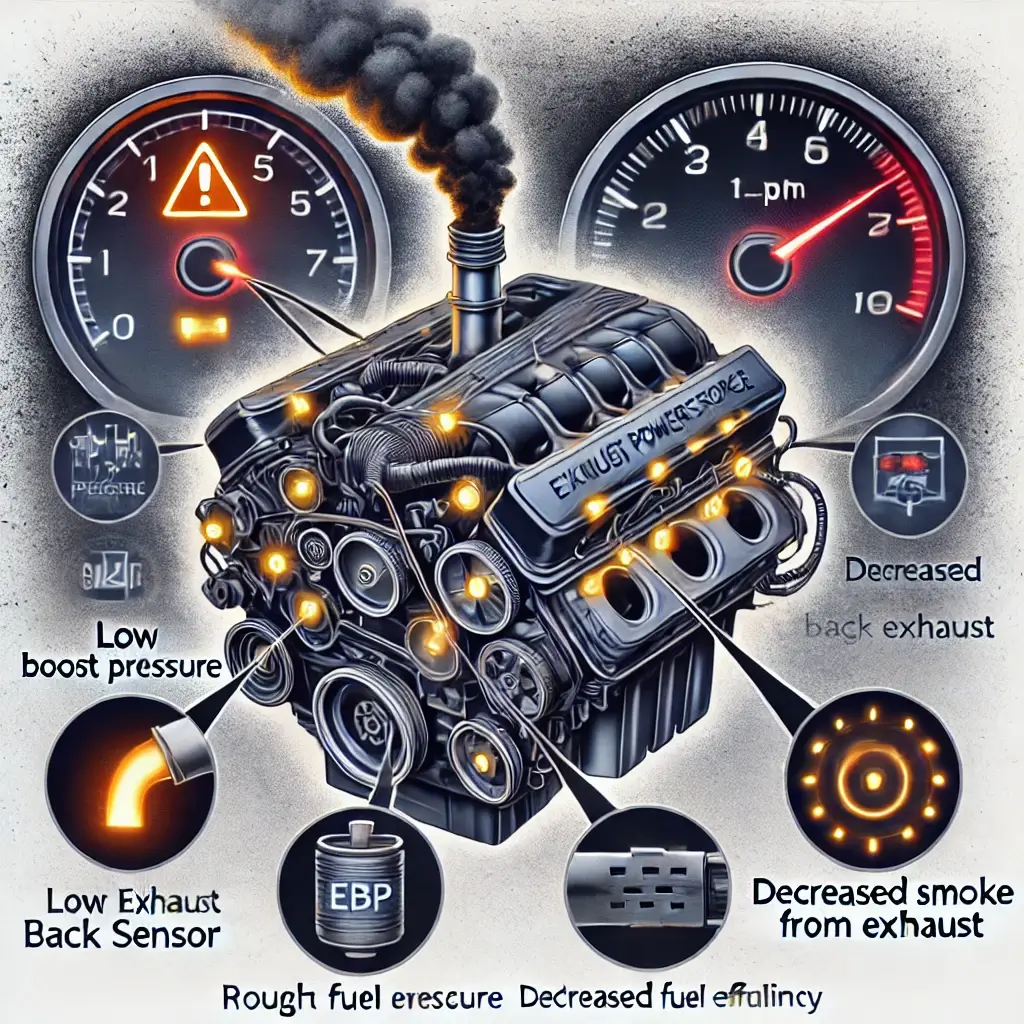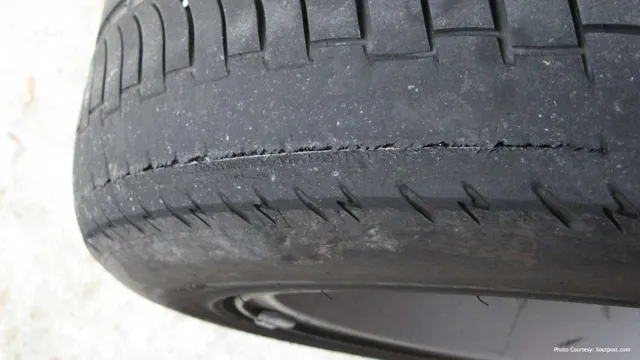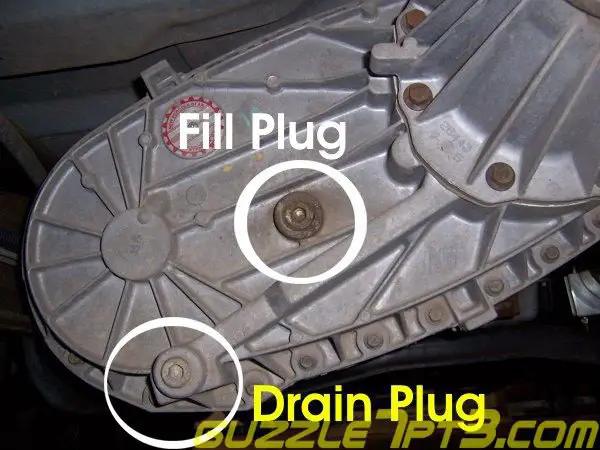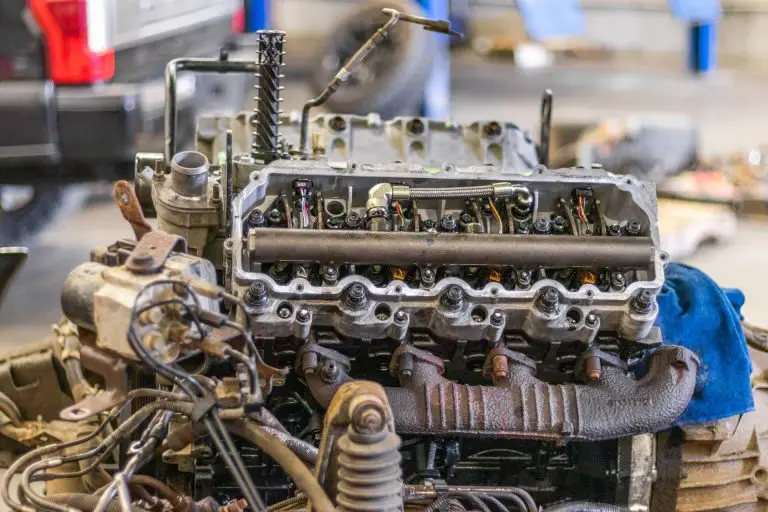Symptoms of a Faulty EBP (Exhaust Back Pressure) Sensor on a 6.0 Powerstroke Engine
The Exhaust Back Pressure (EBP) sensor on a 6.0 Powerstroke Diesel engine plays a crucial role in managing the turbocharger and exhaust gas recirculation (EGR) systems. A failing EBP sensor can lead to various performance issues, and it’s important to recognize the symptoms to address the problem promptly. Here’s a detailed breakdown of common signs of a malfunctioning EBP sensor:
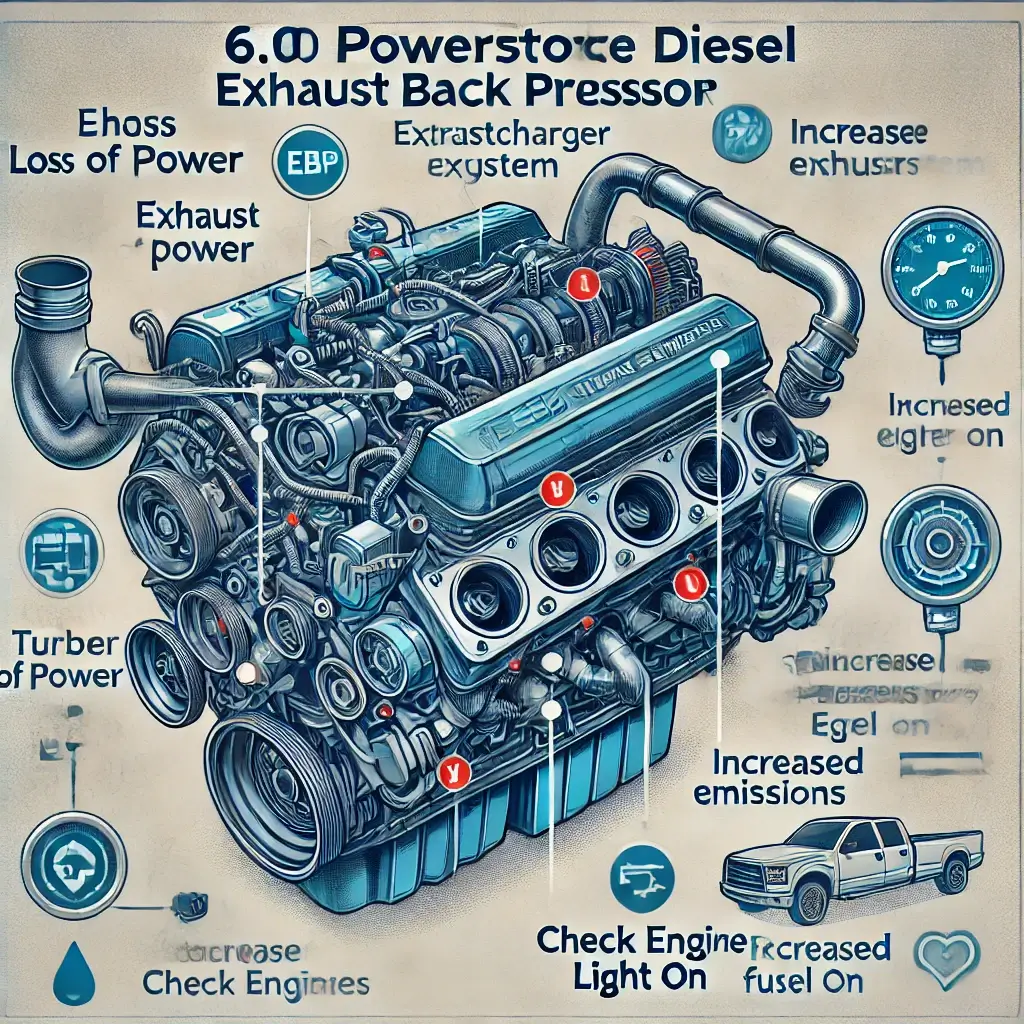
1. Poor Engine Performance
- Loss of Power: One of the first noticeable signs is a decrease in engine power, especially under load or during acceleration. This happens because the engine control module (ECM) relies on the EBP sensor for proper turbo boost control. When incorrect data is provided, the turbocharger may not operate efficiently.
- Sluggish Throttle Response: A faulty sensor can cause the turbo to spool improperly, leading to a delay in throttle response or reduced acceleration.
2. Excessive Smoke from the Exhaust
- Black Smoke: Incorrect readings from the EBP sensor can disrupt the air-to-fuel ratio, causing the engine to run too rich. This results in black smoke emanating from the exhaust, especially during acceleration.
- White or Gray Smoke: In some cases, improper EGR system operation can lead to white or gray exhaust smoke.

3. Erratic Turbo Boost Levels
- Turbo Boost Fluctuations: The turbocharger may act erratically, fluctuating between high and low boost levels. This can be due to the ECM receiving incorrect pressure readings and adjusting the turbo output inconsistently.
- Turbo Lag: A delay in turbo boost build-up is common with a faulty EBP sensor, reducing overall engine performance.
4. Increased Fuel Consumption
- Reduced Fuel Economy: Since the EBP sensor affects fuel injection timing and EGR operation, a malfunction can lead to higher fuel consumption. You may notice a significant drop in miles per gallon (MPG), especially during heavy towing or highway driving.
- Fuel Smell: If the engine is running rich, you may also notice a stronger smell of diesel fuel in the exhaust.
5. Rough Idle and Engine Misfires
- Rough or Unsteady Idle: An inaccurate EBP reading can lead to poor combustion, causing the engine to idle roughly or shake while at a stop.
- Engine Misfires: Misfires may occur as a result of incorrect air-fuel mixture, especially at lower RPMs or under light acceleration.
6. Check Engine Light (CEL)
- Illuminated CEL: A failing EBP sensor often triggers a diagnostic trouble code (DTC), which illuminates the Check Engine Light. Common error codes related to a faulty EBP sensor include P0470, P0471, P0472, P0473, and P0478.
- Stored Fault Codes: Using an OBD-II scanner can help retrieve specific codes indicating a problem with the EBP sensor or related systems.
7. Difficulty Starting the Engine
- Hard Starting: In severe cases, incorrect pressure readings may affect the engine’s starting sequence, leading to longer cranking times or difficulty starting, especially in cold weather.
- No-Start Condition: Although rare, a completely malfunctioning EBP sensor could contribute to a no-start condition if the ECM is unable to adjust for proper airflow.
What Causes EBP Sensor Failures?
- Sensor Contamination: The sensor can become clogged or contaminated with soot, carbon deposits, or oil residue over time.
- Wiring Issues: Corroded or damaged wiring harnesses can prevent accurate signal transmission from the sensor to the ECM.
- Exhaust Leaks: Leaks in the exhaust system can cause the sensor to read inaccurately, affecting the engine’s performance.

Solutions and Maintenance Tips
- Clean or Replace the Sensor: If the sensor is clogged with soot, cleaning it may resolve the issue. However, replacement is often necessary for long-term reliability.
- Inspect Wiring and Connectors: Check for damaged or corroded wires and repair or replace as needed.
- Regular Maintenance: To prevent EBP sensor failure, ensure the turbo and EGR systems are regularly serviced, and keep an eye out for exhaust leaks.
Conclusion
Recognizing the symptoms of a failing EBP sensor on a 6.0 Powerstroke can save you from more extensive and expensive repairs. If you notice any of the above signs, consider inspecting or replacing the EBP sensor. Always consult with a qualified mechanic to diagnose and fix the issue accurately.
Would you like any additional information on how to troubleshoot or replace the EBP sensor?

